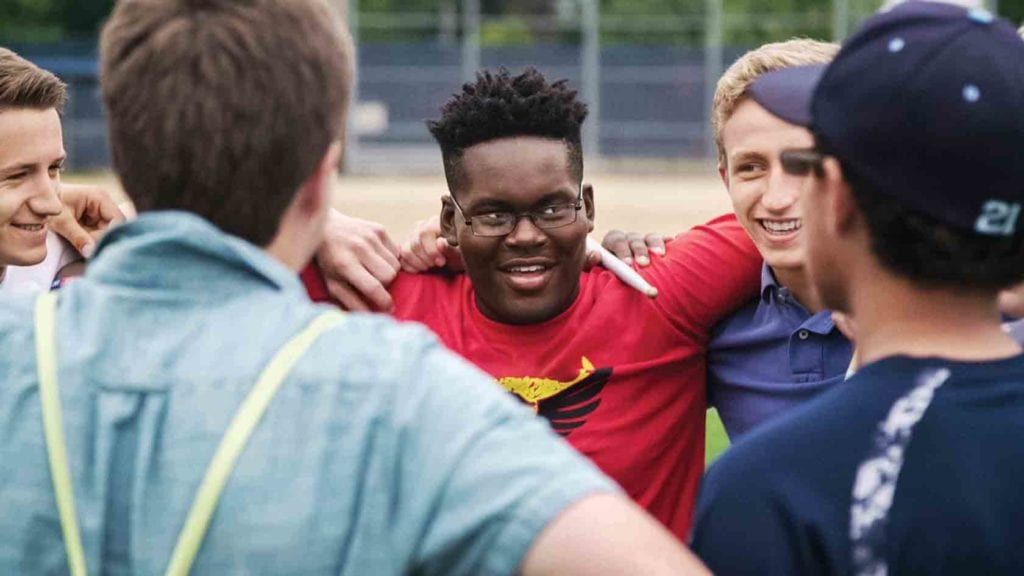Docuseries examines race, educational inequity
Steve James’ ‘America to Me’ airs on Starz through the end of this month

The 10-part documentary series “America to Me” is a riveting look into the daily lives of several students, families, teachers and administrators at the diverse and progressive Oak Park and River Forest High School (OPRF) outside of Chicago. The series exposes and examines the struggles that the suburban high school has grappled with for decades regarding educational inequity among its white and black student populations.
Filmed during the 2015–16 academic school year, “America to Me” documents the students’ daily lives and the challenges and issues that they face today. Directed by Emmy Award-winning and Academy Award-nominated filmmaker Steve James (“Hoop Dreams” and “Abacus: Small Enough to Jail”), the series premiered on August 26 on the Starz network and continues through the end of this month. Earlier this year, the first five episodes made their world premiere at the 2018 Sundance Film Festival.
Despite having lived in the community for decades and having sent his children to the high school, James, along with his producer team, worked for a year to gain permission to film the project at OPRF. The administration didn’t want them there, but the school board held the final decision and voted to allow the cameras into the school.
“I don’t think they would have gotten that far if it was another filmmaker,” says segment director and cinematographer Kevin Shaw, speaking by phone to the Banner. “I think because of who Steve is and because of his place in the community in Oak Park we were able to get this thing done.”
Shaw was responsible for filming student Kendale McCoy and his family over the course of the year. McCoy, who was a junior at the time of filming, initially wasn’t interested in being a part of the project — and neither were his parents. They didn’t know anything about James or the documentary filmmaking process, and his parents were concerned that he would be exposed too much or even taken advantage of, McCoy told the Banner. Plus, they were hesitant about having their personal lives shown on television.
Behind the scenes
McCoy has lived in Oak Park his entire life and says he has always been able to navigate a majority white environment. However, that’s not to say that it’s always been a smooth ride. There were some instances in high school where he had been mistreated. During his freshman year at OPRF, he found that his teachers were often saying things that were disrespectful to him. He also had to contend with other students asking him “How do you do your hair?” “Why do you dress that way?” “Why do you listen to that type of music?” he recalls. “There was a lot going on,” he says. “It all kind of hit me at the same age.”
Ultimately, what changed McCoy’s mind about being involved in the documentary project was a feeling that, “It needed to be put out that OPRF had these racial inequities going on.”
What made the process easier was the trust that Shaw built with McCoy and his parents. During filming, McCoy says of Shaw, “He did a perfect job of making us feel comfortable. There was never a time when Kevin was trying to get all the good stuff. Kevin knew when to film and when not to film.” If the teen stepped away from the camera to speak to his mom about something personal, Kevin gave him his space, and if certain situations became too tense on camera, Shaw would shut the camera off. “He respected me and my family,” McCoy says. “We really, really appreciate that, because it’s hard to be on camera all the time.”
Collaboration
For Shaw, who says he sees himself in McCoy, the experience was about “treating people as human beings and not as commodities.” He explains that normally in reality TV, the goal is to get everything, and “you have to push and push.” Not so with “America to Me.” The goal was to build a relationship with the families, to create a good experience for them. “We’re not making the series about them — we’re making the series with them. That’s the difference right there,” says Shaw. “They’re our collaborators. They’re not people that we’re trying to exploit. We’re making this together, hand-in-hand.”
After having seen the first few episodes at Sundance earlier this year, McCoy and his parents are happy about how the series turned out. His dad is super-
excited and watches an episode a day, according to McCoy. And his mom, who initially was reserved about the film and still is in a way, loves the exposure that he’s receiving.
Being a part of the “America to Me” process and project was a unique experience for Shaw and one that he says he is very proud to be a part of. He thinks that people will come back to it over time and that teachers will bring the series into their classrooms. He says, “I believe that this thing could make an impact and stand the test of time.”






